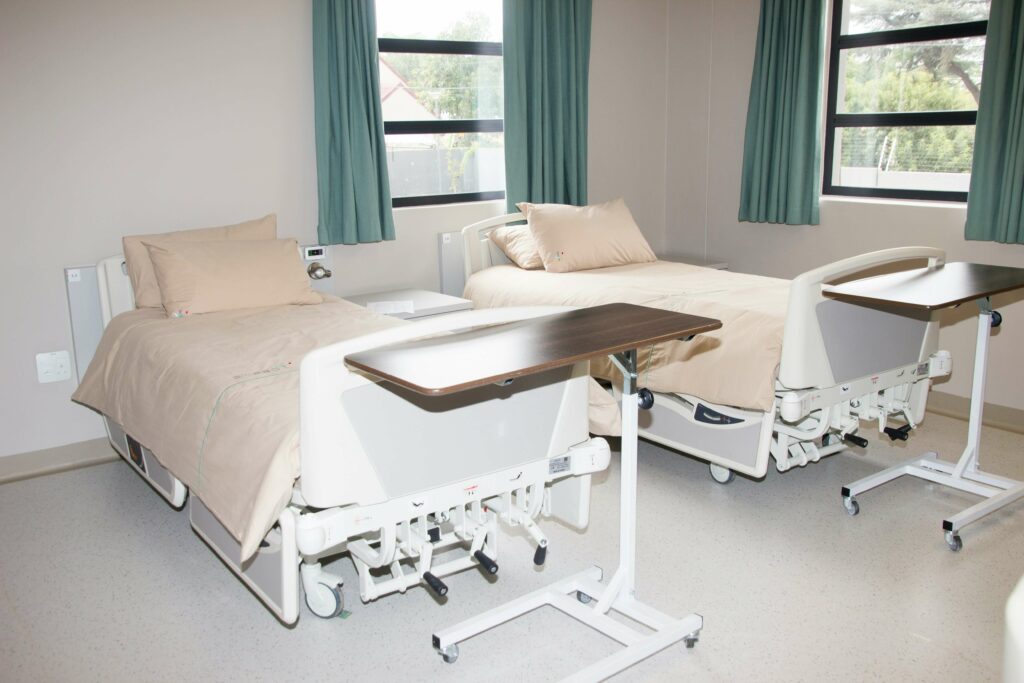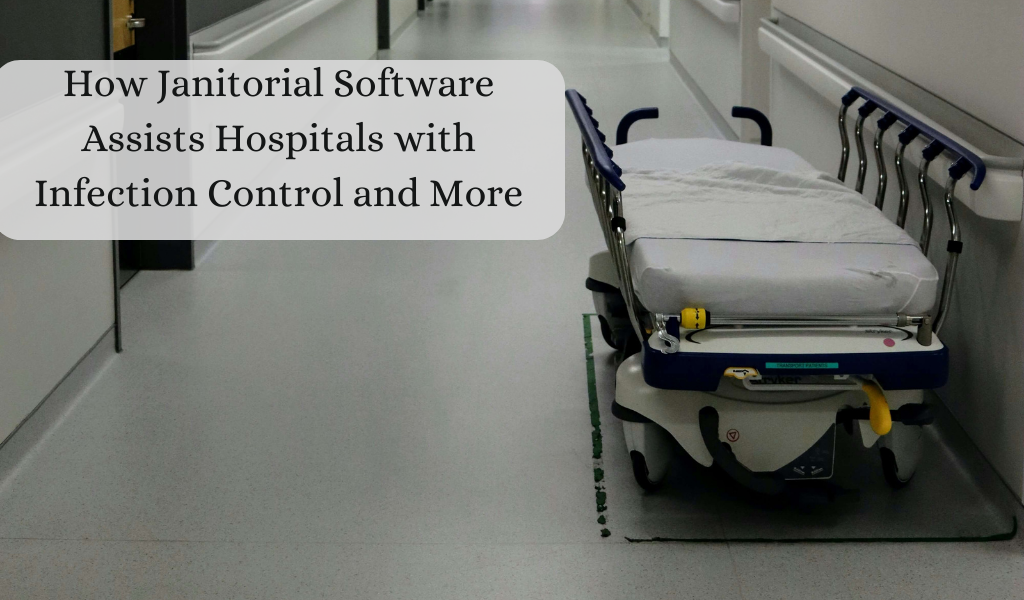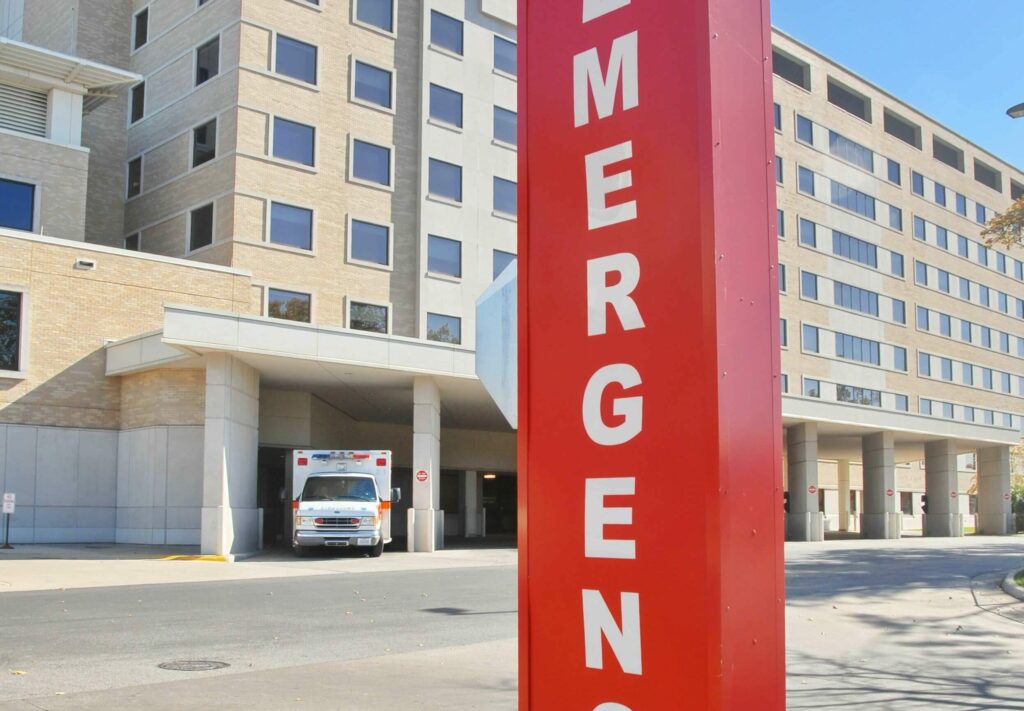How Janitorial Software Can Assist Your Hospital to Guarantee Infection Control (And So Much More!)
Every team working in a hospital has an important job. And at the center of each of those jobs is patient care. One vital part of that care everyone is tasked with is infection control. That’s especially true for janitorial and environmental services teams. As big as that task is, it’s vital to have as many advantages as you can. That’s where janitorial software for hospitals enters the picture.
The hospital environment is active, busy, and constantly changing. There’s no guarantee of any downtime, so your cleaning processes have to account for shifting priorities. At the same time, there’s a lot on the line.
Benefits of Janitorial Software in Hospitals
The Centers for Disease Control and Prevention (CDC) points out that around 3% of hospital patients develop healthcare-associated infections (HAIs). These infections include pneumonia, urinary tract infections, bacterial infections, and more.
In order to lower these infection rates, it’s essential to meet the hygiene standards developed in conjunction with current scientific knowledge, janitorial and hospital best practices, and your own high level of service.
For janitorial and environmental services teams, this means scheduling, task management, and resource optimization are crucial. And the best way to do that is to take advantage of janitorial software for hospitals.
Make health and wellness the core of your hospital janitorial strategy. Schedule a free call with Janitorial Manager to learn how mobile-friendly janitorial software can help your team improve conditions for everyone.
Real-time Monitoring and Reporting
The hospital environment is unique in the janitorial world. Schools, office buildings, and retail environments are prone to the seasonal ebb and flow of germs and contaminants. Hospitals, by contrast, are a year-round party for viruses and bacteria.
Plus, in addition to the usual spills, dust piles, and occasional accidents, hospitals also include pretty much every bodily fluid possible. Bloodborne pathogen precautions and PPE are an everyday necessity.
Similarly, real-time monitoring and reporting are necessities. Cleaning inspections are important, but the hospital environment requires more. When you use janitorial software for hospitals, you give yourself the tools you need to make the most efficient use of your time and resources.
For example, the CDC has an entire section of its website dedicated to the cleaning processes in a hospital environment. Some of the protocols include:
- Scheduling regular meetings to review cleaning practices
- Establish clear reporting guidelines
- Extensive training on using PPE and cleaning chemicals
- Extensive training on infection control and personal safety
- Maintaining records of training and staff competencies
- Specific cleaning protocols for each type of hospital room, such as the ER, OR, radiology, ICU, etc.
- Monitor and maintain hygiene standards through the use of an ATP system or something similar.
- Routine audits and inspections
You can also find a set of checklists for various healthcare-related cleaning environments. These lists cover everything from surfaces to medical equipment to what type of cleaning solutions to use in different situations.
As you can imagine, or perhaps already know, it’s a lot to keep up with. However, if you take advantage of janitorial software for hospitals and hospital cleaning teams, the job is much easier.
With Janitorial Manager and our Scan4Clean QR code system, your team can get updated cleaning checklists for every room. And you can get real-time reports, making it easier to deploy teams where you need them and track their progress.
This reporting also gives you accurate cleaning times, so you can adjust your schedule and personnel levels to keep your team lean and efficient.
Integration with Hospital Systems
One issue for janitorial teams, no matter how organized you are, is making your system work within the hospital’s existing infrastructure. I’m using the word infrastructure loosely here. Essentially, though, every hospital has systems in place to help them function. This “infrastructure” is found in the way they schedule patients, use rooms and beds, triage emergency room patients, and even the physical layout of the space.
While each team may have its preferred infrastructure, they all need to be compatible. So, the way the surgery staff moves and functions might be different than how the emergency room operates. However, they need to be compatible enough so they seamlessly integrate. This is true for anyone using janitorial software for hospitals, as well.
Systems like Janitorial Manager are flexible, so you can work in and around everything else going on in a hospital. You can set alerts, view task lists, make changes as you go, and do what you need to do to ensure you meet your hospital cleaning protocols.
Additionally, with built-in messaging capabilities, hospital staff can reach you and your team instantly with any emergency requests.

Cost Savings and Efficiency
Improving operational flow is nice, of course. But what about your costs and the overall efficiency of the cleaning process? This is where janitorial software truly excels. The entire point of janitorial software is to make your job easier.
Small business owners are busy people. That’s true if you’re running a commercial and hospital cleaning business, a restaurant, or an insurance agency. Many business owners act as the HR department, marketing department, sales department, on-site management, and so on.
It’s easy to make mistakes. You order too many supplies. You forget to order cleaning solutions. You neglected to fill a gap in the schedule. These things happen not because you’re careless; they happen because you have so much on your plate. Unfortunately, they also cost you money.
But janitorial software for hospitals and environmental services teams can change that. Once you’re up and running, things start snowballing and the job gets easier.
One example is the next-day shipping for a case of a general-purpose cleaner. That can range from around $125 to around $300, depending on where you order your supplies. Of course, for that price, you’ll head to your local grocery or big box store and pick up enough to cover what you need. You’ll pay a little more, but it’s better than hundreds in shipping.
That extra cost, whether shipping or higher retail prices, won’t hurt you if it only happens once in a while. But you can see how the costs could add up. An extra $10 here and an extra $30 there and soon enough, you’re spending hundreds more each month than you need to.
However, with janitorial software, you can track product usage and inventory. You’ll never accidentally run out of what you need. You know how much you use, and how often you need to order. You can also track any variances, so you know if there’s something you need to look into, such as employees using too much or too little product.
Let’s look at another example. You work in a busy hospital, and you need to get patient rooms turned over quickly. You’re also working short-staffed because you made a mistake on the schedule. If this happens once or twice, hospital staff may get annoyed with you. If it happens regularly? There’s a good chance your contract will end sooner rather than later.
With janitorial software, you can more easily project and determine staffing levels. And, as mentioned earlier, with QR codes like our Scan4Clean system, you know precisely how much time different tasks take. Scheduling errors become a thing of the past.
These are extreme examples. But the truth is that what weighs you down as a business owner is rarely the “big” thing. It’s those little misses and mistakes that add up over time. And you can avoid many of those with the right software.
Challenges and Solutions
Okay. Now let’s go over something that we all know happens. Some people just don’t like change. You have a system that’s not great, but works well enough, at least from the employee perspective. No one wants to try anything new. Change is sometimes met with resistance.
The first thing to understand is that, well, the resistance to change is understandable. There’s often a learning curve with new systems or software. And even though these changes might lead to easier work in the future, many people often can’t look beyond the immediate efforts of implementation.
Again, this isn’t to say the resistors are trying to sabotage anything. We as humans often prefer the status quo because the outcome of change is so uncertain. Especially in evolutionary terms, changing how we do things could mean the difference between eating a sabertooth tiger for dinner or being dinner for a sabertooth tiger!
Luckily we don’t have to worry about that. Still, it’s helpful to understand the hesitancy and prepare for that challenge.
Another common challenge with implementing a new system is the technical aspect of things. You want to make sure you have someone to get in touch with if you have questions or can’t figure something out. Ideally, your software provider offers free training and onboarding assistance.
Investing in janitorial software for hospitals will help streamline your work and improve your efficiency. Most importantly, however, it’s the tool you need to improve your infection control procedures.
Keep up with your cleaning schedule and checklists. Learn more today with a discovery call and find out how to make your cleaning operation more efficient, cost-effective, and safer for everyone when you use janitorial software for hospitals and environmental services teams.


